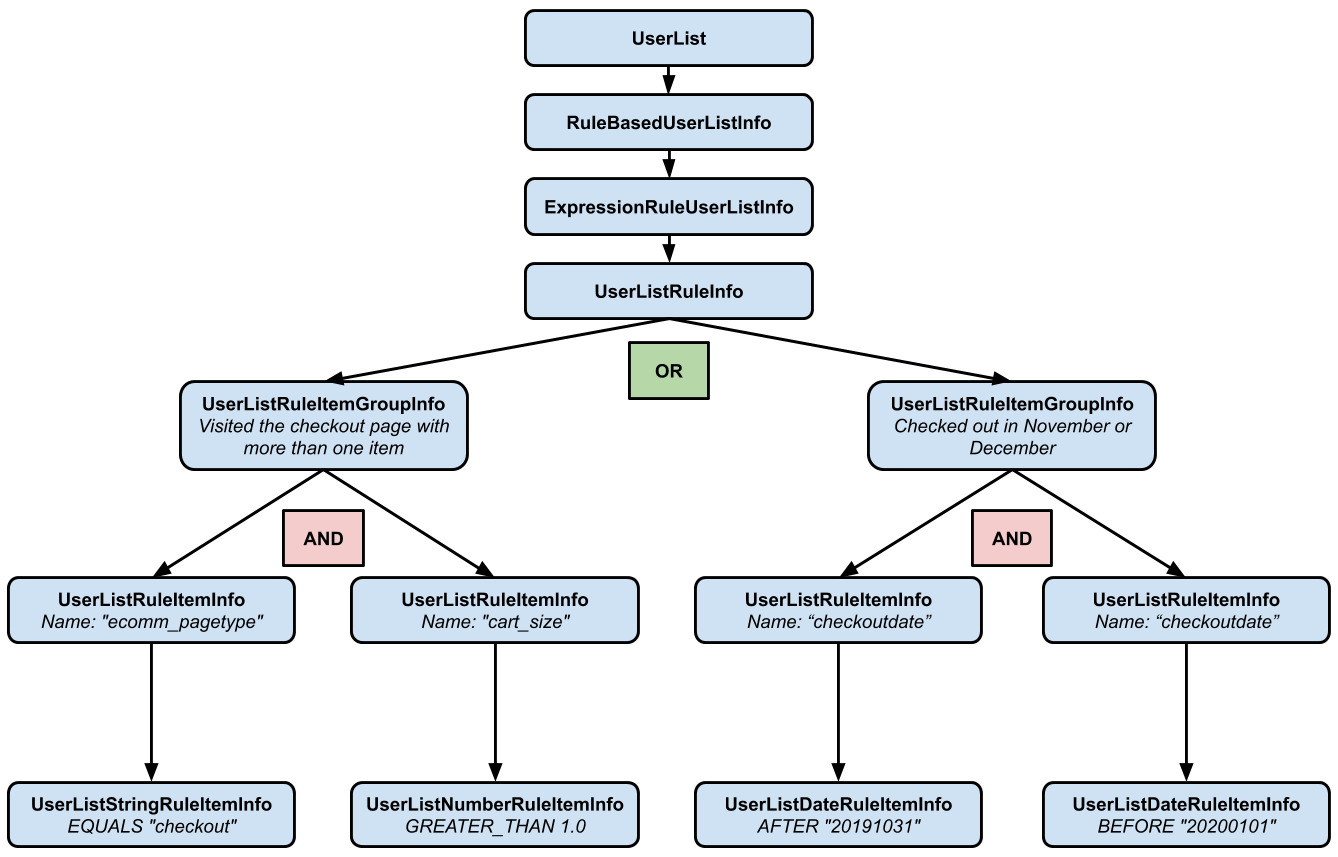বলুন আপনার একটি সাইট আছে যেখানে আপনি ব্যবহারকারীদের নিম্নলিখিত বৈশিষ্ট্যগুলি ক্যাপচার করতে বেশ কয়েকটি কাস্টম রিমার্কেটিং ট্যাগ প্যারামিটার কনফিগার করেছেন:
-
event- আপনার সাইটের পৃষ্ঠার বিভাগ, যেমন চেকআউট, কার্ট ইত্যাদি। -
cartsize- একজন ব্যবহারকারীর শপিং কার্টে আইটেমের সংখ্যা। -
checkoutdate- যে তারিখে একজন ব্যবহারকারী চেক আউট করেছে। আপনি শুধুমাত্র এই পরামিতি সেট করুন যখন একজন ব্যবহারকারী প্রকৃতপক্ষে একটি ক্রয় সম্পন্ন করে।
আপনি এমন ব্যবহারকারীদের আরও ইম্প্রেশন দেখাতে আগ্রহী যারা তাদের শপিং কার্টে একাধিক আইটেম রেখেছেন এবং চেকআউট প্রক্রিয়া শুরু করেছেন। আপনি সেই ব্যবহারকারীদেরও খুঁজে পেতে চান যারা নভেম্বর এবং ডিসেম্বর মাসে কেনাকাটা করেছেন কারণ আপনি সেই মাসগুলিতে আপনার সাইটে একটি বড় বিক্রয় করার পরিকল্পনা করেছেন৷
আপনি নিম্নলিখিত নিয়মগুলির যেকোনো একটি দিয়ে ব্যবহারকারীদের এই সেটটি বর্ণনা করতে পারেন:
- যে ব্যবহারকারীরা চেকআউট পৃষ্ঠায় গিয়েছিলেন এবং তাদের কার্টে একাধিক আইটেম ছিল৷
- যে ব্যবহারকারীরা নভেম্বর বা ডিসেম্বর মাসে চেক আউট করেছেন।
যদি একজন ব্যবহারকারী 1 বা বিভাগ 2-এর মধ্যে পড়েন, আপনি নির্দিষ্ট বিজ্ঞাপন গোষ্ঠী বা প্রচারাভিযানে আপনার বিড 25% বৃদ্ধি করতে চান।
বস্তু
একটি নিয়ম-ভিত্তিক ব্যবহারকারী তালিকার গঠন দেখুন। একটি নিয়ম-ভিত্তিক তালিকা Google Ads API-এ একটি rule_based_user_list হিসাবে উপস্থাপন করা হয়।
নিম্নলিখিত চিত্রটি দেখায় যে এই ব্যবহারের ক্ষেত্রে rule_based_user_list আমাদের কাজ শেষ হলে কেমন দেখাবে।


